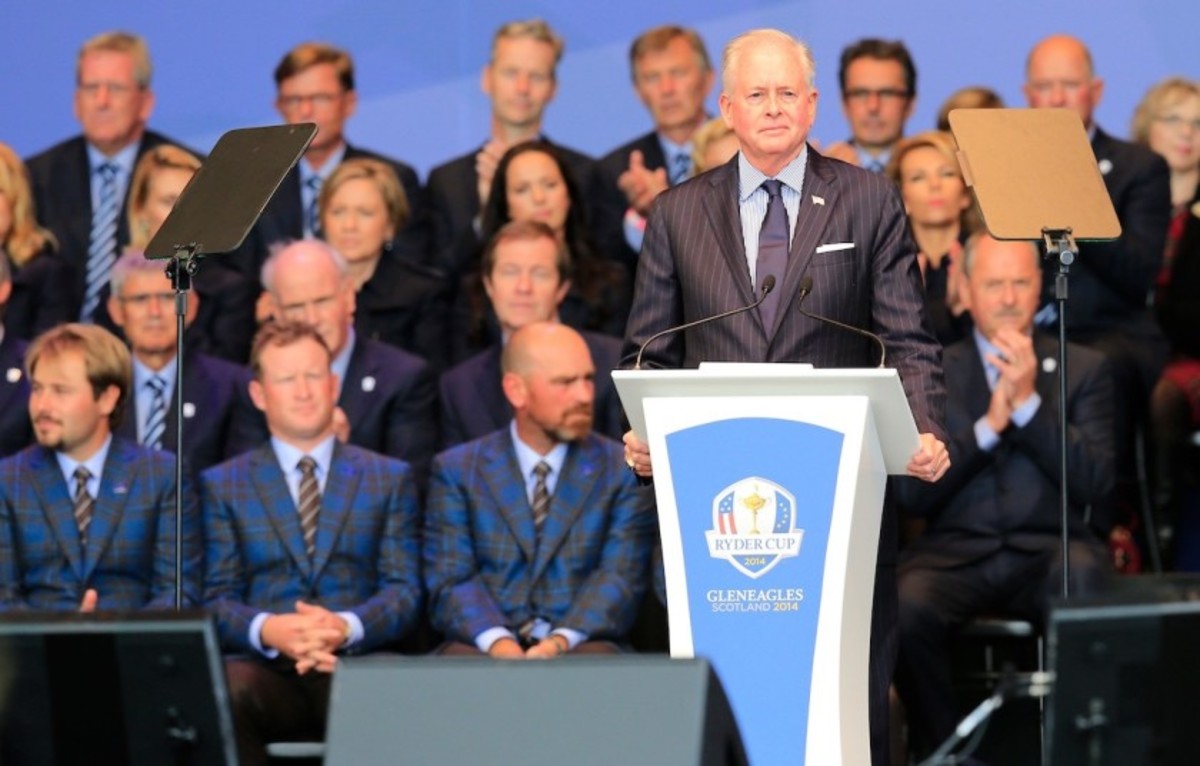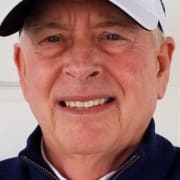The Ryder Cup would be a flop without fans

The past month provided much-needed live televised golf to help fill the gap in sports coverage caused by the coronavirus pandemic.
Two charity exhibitions on consecutive Sundays featured some of golf’s brightest stars and raised millions for coronavirus relief. Rory McIlroy and Dustin Johnson played Rickie Fowler and Matthew Wolff before Tiger Woods and Phil Mickelson joined football’s Peyton Manning and Tom Brady in one of the most entertaining golf matches ever. Both made-for-TV events were played without fans.
By contrast, the most exhilarating crowd roars in all of golf occur at the Masters and the Ryder Cup. Inherently, the roars at those events are totally different.
The cheers within the hallowed grounds at Augusta National Golf Club cascade in loud bursts that easily can be identified as coming from well-defined geographical areas on the course. Eagles on Nos. 13 or 15, clutch birdies on 12 or 16 and a rare albatross on 2 are all feats that prompt cheers to vibrate through the pines and azaleas at the Masters and leave little doubt as to their origin. I suppose TV viewers would be content to see a Masters without roars because of the beauty of the golf course, though Augusta National will look different in November for this year’s event, part of a revised PGA Tour schedule that begins next week.
The Ryder Cup is different. It starts on the first tee, where fans jam the bleachers in the predawn darkness. There are wild costumes and clever lyrics attached to traditional songs that mostly the European fans have customized to describe the participants. The songs may be the same from match to match, but the lyrics vary. The first tee at the Ryder Cup is unlike anything in all of sport.
"Anybody that's been to the Ryder Cup, player or fan, talks about the atmosphere," European veteran Lee Westwood told Golf Channel last week. “The people that create the atmosphere are the fans.”
This year’s biennial matches, set for Sept. 25-27 at Whistling Straits in Kohler, Wis., might be played without fans because of social-distancing concerns. The PGA Tour is restarting its season next week at Colonial in Fort Worth, and the first four events – possibly more – will be fan-free zones. But the Ryder Cup?
"I personally don't want to play if there's no fans,” American Brooks Koepka told Golf Channel. “I don't see a point in playing it."

At Celtic Manor in 2010, I was paired with U.S. vice captain Tom Lehman for the duration of the matches. We were assigned the first match of that Ryder Cup: Americans Phil Mickelson and Dustin Johnson versus Lee Westwood and Martin Kaymer in four-balls. We followed the players across the foot bridge that led from the putting green to the first tee. It was a frenzy like nothing I had seen from other major events I had attended, including a World Series Game 7, NBA Finals and NCAA Final Four.
The European fans were in control and soon broke into the soccer chant “Olé, Olé, Olé” as Westwood and Kaymer claimed their spots on the first tee.
As we crossed that bridge, I shouted at Lehman, “Tom, what’s it like to be a player right now?”
“It still makes the hair on my neck stand out,” he said. “It makes you want to kick some European ass.”
Those matches were haunted by rain and foul weather. Six holes into that opening match, play was suspended. After a lengthy delay, we were instructed to return to the course in the late afternoon and play until darkness. The American caddies were saying the delay would be great because the fans surely would have left the course, minimizing Europe’s home-course advantage.
Lehman overheard the remarks. “Are you guys crazy? These fans have not left. They have been at their nearest watering hole for hours. It will be worse than ever when we get back out there.”
He was right. It wasn’t like a sparse Major League Baseball crowd after a long rain delay. These fans were oiled up and ready to support their European team. Only at the Ryder Cup.
Fast forward to Medinah in 2012. Bubba Watson revved up the American faithful on the first tee. He exhorted them to cheer loudly while he was in the middle of his swing. Wait a minute … this is golf? We are supposed to hear a pin drop when someone stands over a tee shot. The Ryder Cup is different.
Later in those Medinah matches, Steven “Pepsi” Hale, who caddied for American Keegan Bradley, wildly waved the pin flag after Bradley sank a crucial putt on Saturday. Hale was accused by European players of poor sportsmanship and inciting the crowd. Really? Only at the Ryder Cup.
In the 2014 matches at Gleneagles, American Patrick Reed played the role of pantomime villain by winding up Europe’s fans during the final day. After opponent Henrik Stenson nailed a long putt at No. 7 to turn up the pressure, Reed drained his 8-footer to halve the hole and stay at all square. The self-proclaimed Captain America held his hand to his ear, taunting the silent Euro crowd to react to his clutch putt.
As a former PGA of America officer, I had the privilege of experiencing three Ryder Cups inside the ropes, inside the locker rooms, inside the team rooms and, to a degree, inside the heads of American players and captains. The antics and behavior of the fans, as well as the electricity provided by those in attendance, always was a topic of conversation among the players and captains.
The Ryder Cup is perhaps the toughest major sporting event to spectate in person. Only four matches are played at a time during the morning and afternoon sessions on Friday and Saturday. Twelve singles matches conclude on Sunday. Large crowds can affect visibility for fans because the action is limited to a few holes, but they nonetheless get charged up.
The Ryder Cup is more about the fans than any other sports event. A made-for-TV Ryder Cup without the craziness of those zany and passionate fans would be a bust by NBC, Golf Channel and the PGA of America.
"My personal hunch is, I don't see how it is going to happen," said European Rory McIlroy, the No. 1-ranked player in the world. "I think the majority of players would like to see it pushed back until 2021 so that they can play in front of crowds and have the atmosphere that makes the Ryder Cup so special."
If spectators will not be part of the Ryder Cup this fall, the PGA of America needs to take a year off. There is precedent for such a move. It happened in 2001 after the 9/11 terrorist attacks. The only major adjustment on the PGA Tour schedule was the Presidents Cup.
It’s a simple fix. A Ryder Cup with no fans would be like Christmas without Santa Claus.
Sign up to receive the Morning Read newsletter, along with Where To Golf Next and The Equipment Insider.
